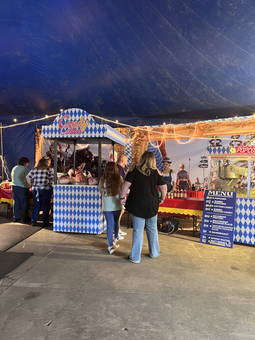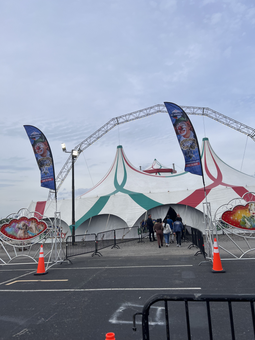Spectator to Strategic Thinker
From a young age, I indulged in watching and playing sports, as well as being well versed and educated in music and film. I had been an avid sports and entertainment fan before coming to the university. There was a major shift and curve in understanding this industry and how a fan intertwines with employee. There is a fine line and balance in the industry between being a spectator or fan and doing your job fully focused on what is in front of you.
Although I have had many hands-on experiences in the industry, I have never engaged in one where athletes would be in and out of the building, as well as passing through my section. Working the MLB All Star Event allowed me to understand what a strategic thinker does while being on the job in this industry. As a spectator, it is exciting going to sport and entertainment event not only for the action but for the possibility of meeting and seeing celebrities you look up to. Entering the university program, I viewed sports and entertainment through a lens of emotion, excitement, adventure, and relaxation. Through experiences and class teachings, my perspective shifted.
I have been able to gain a lot of knowledge on the behind the scenes work that goes into any live entertainment event. One thing I had to first understand to change my scope of thinking was the difference between sports and sport. I have studied the art of sport, not sports. While sports are the physical activity, sport encompasses everything involved, including operations, staff, preparation, and finances. This was the first shift in my thinking to be successful in this industry. It is important to understand the innerworkings of any live entertainment event. I am now able to see a lens of thinking and participating during a situation and event instead of indulging from the sidelines.
Industry awareness includes understanding operations, consumers, competitors, and success factors. Industry awareness has allowed me to react to situations presented to me. In this industry, there is an immense number of things that could possibly happen at any given event. As a strategic thinker, I am always ready to be a decision-maker. This shift in thinking allowed me to be more aware of the industry and its expectations. Sponsorships, mission statements, emergency action plans, and venue layouts are all things spectators do not think about. As an industry worker, all of these aspects must be flowing through your head during an event.
In SPTE 635: Event Development, I was able to gain new knowledge and skills on how to be a strategic thinker during events. In this course, I was forced to think as a professional, not a spectator or fan. I thought about the long-term impact that decisions have on the success of an event. Throughout this course, there were many projects centered around creating an event. Not only was the curation of the event important, but everything that an event manager would have responsibility over were things we had to put into perspective and think about when creating any given event.
In this first artifact, you will find various pictures from a live event I attended during the duration of this course. The live event pictured is a German circus experience. I had a major shift during this event from only being a spectator to becoming a strategic thinker. Throughout the event, I focused on things such as signage, lines, and wheelchair accessibility. These details are important to be noted for the success of future events. As an industry professional, it is my duty to notice these details and express to superiors how they must be improved upon. As a spectator, these details are not noted, but as a strategic thinker, these details are vital in this success of the event. This shift in my head will work throughout my career. Small details make big differences in the live event world.
Specifically, the top picture is an example of the lines and workers that were present during the event. One thing I noted was how the employees, even at concessions, were all dressed 'the part.' This is important to note because it plays into the image and brand of the circus. This allows the consumers to become more involved and immersed into the event and experience of the event. The bottom picture shows the entrance of the circus. I took this picture to note the signage at the event, or lack of. It is important that attendees are aware of entrance and exit points of an event, as well as direction to the main attraction(s). The circus barricaded the entrance pathway for attendees to enter. Although this is the case, tickets were also purchased to enter the event. There was not an usher to ticket scanner at the entrance of the event. This could cause pressure for attendance and numbers to be noted. These are only a few details included from the event to reinforce my learning.
A major assignment in this course was an Event Life Cycle analysis. An Event Life Cycle includes the steps and processes in making a live event come to life from paper to reality. This process forces one to think about stages it takes to curate a live event. In the example included, the Event Life Cycle is an analysis of strategically thinking about the life cycle of a music festival in Atlanta, Georgia; Music Midtown. There are a total of ten steps in the cycle, as included in the artifact. This activity pushed me and my thought processes to think outside of the spectator perspective. I took into consideration things such as goals, expectations, finances, staffing, and comparing results.
In my future in the industry, I will continue to have the mindset of a strategic thinker rather than of a spectator. Although the spectator perspective is a key role in this, a strategic thinker is able to think like a spectator and make decisions based upon those things. My past and future experiences, as well as this course have enabled me to think like a successful, industry professional.
Artifacts


Create Your Own Website With Webador